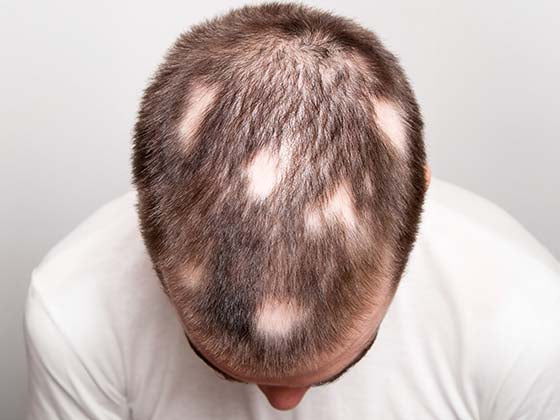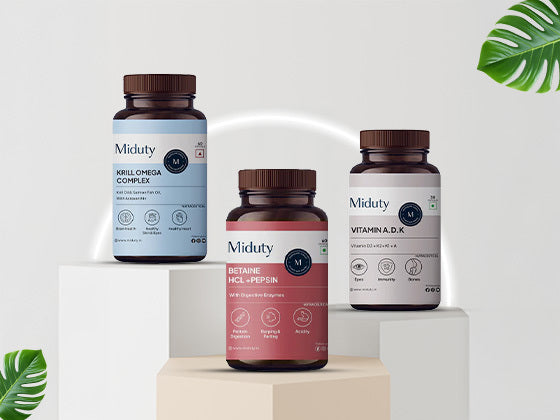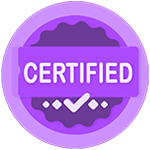Welcoming a new baby into your family is a wonderful time, but it also involves a learning curve, particularly in terms of newborn skin and hair care. Newborns' skin and hair are sensitive and require special care. This blog provides important advice for caring for your baby's skin and hair.
Understanding Baby Skin and Hair

Recognizing the special traits and weaknesses of infant skin and hair is essential to understanding it. You can guarantee that your baby's skin and hair stay comfortable and healthy by using mild products, adhering to good hygiene practices, and getting advice from medical specialists when necessary. Your baby's general well-being will be enhanced by routinely observing them and modifying your care routines according to their demands.
The Delicate Nature of Baby Skin
It is essential to recognize the sensitive nature of a baby's skin to provide the right treatment and preserve skin health. Parents can effectively protect and nurture their baby's sensitive skin by using gentle products, implementing good hygiene practices, and paying attention to changes in skin condition. Making sensitive care procedures a priority helps to keep babies comfortable and free from unneeded skin issues or irritations.
Common Skin Conditions in Newborns

Some common skin conditions that newborns may experience:
-
Milia: Milia are little white pimples that usually appear on a baby's face, especially on the cheeks and nose. They often leave on their own in a few weeks and are brought on by trapped keratin, a protein in the skin.
-
Neonatal Acne: Some babies develop little red or white blemishes on their faces between the ages of 2 and 4 weeks. This is caused by maternal hormones remaining flowing in the baby's system, and it usually resolves on its own without therapy.
-
Erythema Toxicum: Also known as newborn rash or erythema toxicum neonatorum, this frequent rash consists of red patches with little white or yellow pimples in the centre. It can develop anywhere on the body and is commonly seen within the first few days following delivery. It usually resolves itself after a week.
-
Mongolian Spots: These are flat, bluish-gray patches that may form on the lower back or buttocks of babies with darker skin tones. They are harmless and usually go gone on their own by school age.
-
Cradle Cap: This illness manifests as yellowish, oily, scaly spots on a baby's head. It may also appear on the brows, ears, or eyelids. The cradle cap can be managed with gentle washing and brushing, and it normally goes away after a few months.
-
Diaper Rash: This is a frequent diaper-related skin irritation caused by extended exposure to pee and feces, friction, or product sensitivity. Keeping the diaper region clean and dry, applying barrier creams, and changing diapers regularly can all help prevent and treat diaper rash.
-
Heat Rash: Babies can acquire heat rash (miliaria) in hot, humid weather. It typically shows tiny, red pimples or blisters on clothing-covered regions of the body. Keeping the baby cool and comfortable can assist in avoiding heat rash.
-
Birthmarks: These can take several forms, including stork bites (salmon patches), strawberry hemangiomas, and port wine stains. Most birthmarks are safe and might disappear over time or last a lifetime.
Baby Hair Growth Patterns and Care
Baby-to-baby can differ greatly in terms of hair growth and maintenance. Here are some broad observations and advice:
Hair Growth Patterns:
-
Some babies are born with a full head of hair, while others may have very little or even no hair at all. The amount and texture of hair at birth are largely influenced by genetics.
-
It's common for a baby's hair texture to change within the first few months or years. Initially, soft and fine hair may thicken or become curly as the baby grows.
-
Babies may go through different stages of hair growth, such as shedding their newborn hair (which might happen around 3-4 months) and growing new hair.
Hair Care Tips:
-
Use a mild baby shampoo to cleanse the baby's hair and scalp. Aim to wash their hair a few times a week, or as needed if they get visibly dirty.
-
Use a soft baby brush with natural bristles to gently brush the baby's hair. This can help distribute natural oils and prevent tangles.
-
Refrain from using adult shampoos or styling products on your baby's hair, as they can be too harsh for their sensitive scalp.
-
If your baby has little hair or spends time outdoors, consider using a hat or sunscreen to protect their scalp from the sun's rays.
-
Be patient with your baby's hair growth journey. It may take time for their hair to grow and develop fully.
-
If your baby has longer hair that gets in their eyes or bothers them, you can trim it gently with baby-safe scissors.
-
Be gentle when handling your baby's hair to avoid pulling or causing discomfort.
Daily Baby Skin Care Routine

Maintaining the health, hydration, and protection of your baby's sensitive skin requires a daily skin care regimen. This is a recommended daily schedule:
Morning Routine:
-
You don't need to bathe your baby every day; 2-3 times a week is usually sufficient in the early months. Use lukewarm water (not too hot) to avoid drying out the skin. Use a mild, fragrance-free baby cleanser/shampoo. Avoid using adult soaps or harsh products.
-
After bathing, gently pat your baby's skin dry with a soft towel. Avoid rubbing, as this can irritate the skin.
-
Apply a gentle baby moisturizer immediately after bathing while the skin is still damp to lock in moisture. Choose a fragrance-free and hypoallergenic moisturizer suitable for babies.
Throughout the Day:
-
Change diapers frequently to keep the diaper area clean and dry. Use alcohol-free and fragrance-free baby wipes or warm water and soft cloth wipes for cleaning.
-
If your baby is 6 months or older and will be exposed to the sun, apply a baby-safe sunscreen with SPF 30 or higher. Consult with your pediatrician before using sunscreen on younger babies.
-
Keep your baby in a comfortable, cool environment to prevent overheating, which can lead to heat rash.
Evening Routine:
-
If your baby gets messy or sweaty during the day, you can gently cleanse their face and hands with a soft cloth and warm water before bedtime.
-
Change into a clean diaper and apply diaper cream if needed to prevent diaper rash.
-
Apply a light layer of moisturizer if your baby's skin tends to be dry, focusing on areas like cheeks, elbows, and knees.
Gentle Cleansing Tips

Gentle washing is essential for preserving the sensitive skin of newborns and young children. Here are some ideas for effectively and safely washing your baby's skin:
Choosing Products:
-
Opt for gentle, fragrance-free baby cleansers or soaps specifically formulated for sensitive skin. These are less likely to cause irritation or allergic reactions.
-
Check labels to avoid products containing harsh chemicals, artificial fragrances, dyes, and alcohol, as these can dry out or irritate the skin.
-
Use lukewarm water for cleansing. Water that is too hot can strip the skin of natural oils and lead to dryness.
Cleansing Techniques:
-
Wash your hands thoroughly before bathing or cleansing your baby to prevent transferring bacteria or irritants to their skin.
-
Babies generally do not need daily baths, especially in their first months. 2-3 times a week is often sufficient, with spot cleaning as needed for areas like the diaper region or skin folds.
-
Use a soft washcloth or your hands to gently cleanse your baby's skin. Avoid scrubbing vigorously, as this can cause friction and irritation.
-
After bathing or cleansing, pat your baby's skin dry with a soft towel. Avoid rubbing, which can irritate sensitive skin.
Choosing the Right Moisturizer

Choosing the correct moisturizer for your baby is important for keeping their sensitive skin nourished, protected, and free of irritation. Here are some suggestions to help you choose a good moisturizer:
-
Ingredients to Look: Choose hypoallergenic moisturizers to reduce the risk of adverse reactions. Fragrances can irritate sensitive skin, so choose fragrance-free products that are particularly labeled for sensitive skin. Natural oils (such as almond oil and jojoba oil), shea butter, glycerin, and oatmeal extract are all soothing components that assist in moisturizing and soothing the skin.
-
Avoid Harsh Ingredients: Some people prefer to avoid parabens because of potential health risks. These might be drying and irritate delicate skin.
-
Texture and Absorption: Select a moisturizer with a creamy or lotion-like texture that spreads easily and absorbs deeply into the skin without leaving a greasy behind.
-
Specific Needs: Consider your baby's special needs, such as extra dry spots, eczema-prone skin, or intolerance to certain components. Moisturizers specifically formulated for these problems may contain soothing substances such as colloidal oatmeal or ceramides.
-
Pediatrician Recommendations: If your baby has specific skin conditions or you're unsure about which product to choose, consult your pediatrician. They can recommend a moisturizer tailored to your baby's skin type and any specific concerns.
Protecting Baby's Skin from the Elements
Protecting your baby's skin from the elements necessitates several critical precautions that differ depending on the weather and environmental conditions. Here's a detailed guide to help you protect your baby's delicate skin:
-
Sunscreen: For babies beyond the age of six months, use a baby-specific sunscreen with an SPF of 30 or higher. Choose a broad-spectrum sunscreen that blocks both UVA and UVB rays. Apply sunscreen liberally to all exposed regions of your baby's skin, including the face, ears, neck, and hands, about 15-30 minutes before heading outside. Reapply sunscreen every 2 hours, or more often if your baby is swimming or sweating.
-
Sun Avoidance: Limit direct sun exposure, especially between 10 a.m. and 4 p.m., when UV rays are greatest. Use light clothes that cover your baby's arms and legs. Choose garments with a tight weave or UV-protective fabric. Use a wide-brimmed hat to protect your baby's face, neck, and ears.
-
Layer Clothing: To keep your kid warm, dress him in layers. Begin with a moisture-wicking base layer, then a heated middle layer, and finally a wind-resistant outer layer. Avoid wearing overly tight clothing, as this might limit circulation and produce pain.
-
Protective Accessories: To reduce heat loss and defend against cold winds, wear mittens or gloves, stockings, and an ear-covering hat.
-
Moisturize: Both cold weather and indoor heating can cause your baby's skin to become dry. To keep their skin hydrated, apply a light, fragrance-free moisturizer frequently, particularly after bathing.
Essential Hair Care Tips for Babies

Taking care of your baby's hair is essential for keeping it clean, healthy, and pleasant. Here are some important hair care guidelines for babies:
-
Washing and Shampooing: Babies normally do not require daily hair washing. 2-3 times a week is usually adequate, depending on how active your kid is and how much they sweat. Adjust the frequency according to your baby's hair type and activity level. Choose a gentle, tear-free baby shampoo designed exclusively for babies. Avoid adult shampoos since they may contain harsher substances that are too powerful for your baby's sensitive scalp. Gently massage a tiny bit of shampoo into your baby's scalp with your fingertips, taking care not to rub too hard.
-
Brushing and Combing: Use a soft-bristled baby brush or one with natural bristles. These are soft on your baby's scalp and help to spread natural oils. Brush your baby's hair lightly once or twice a day to avoid tangles and evenly distribute oils. This can also help with cradle caps by gently releasing the flakes. Early on, introduce your infant to gentle brushing so they develop acclimated to the sensation and it becomes a relaxing part of their routine.
-
Dealing with Cradle Cap: If your infant develops a cradle cap (a common condition characterized by crusty or oily spots on the scalp), gently massage it with baby oil or mineral oil to release the scales. Once the scales have relaxed, remove them with a gentle brush or towel. Do not pick or scrape the cradle cap, since this might irritate the scalp and cause infection.
-
Hair Accessories and Styling: Avoid using tight hairbands, clips, or accessories that may pull on your baby's hair or scalp. If you do utilize accessories, they should be soft, comfy, and not too tight. If your baby's hair begins to get in their eyes or becomes tangled easily, carefully clip it with baby-safe scissors. To avoid accidentally cutting the scalp, trim in small amounts at a time.
Safe and Gentle Hair Washing Techniques

Washing your baby's hair demands a careful touch to keep it clean without causing discomfort or irritation to their sensitive scalp. Here are some safe and gentle hair-washing procedures for babies.
-
Support Your infant: Keep your infant secure and in a comfortable position. You can use a baby bathtub, an infant bathtub insert, or simply hold your kid over a washbasin or basin.
-
Wet the Hair: Wet your baby's hair with lukewarm water, gently. You can wet their hair by scooping water with your hand or pouring it over their head with a cup.
-
Apply a Small Amount of Shampoo: Pour a small amount of tear-free baby shampoo into your hand. Rub your hands together to lather it slightly.
-
Massage Gently: Use your fingertips (not nails) to massage the shampoo into your baby's scalp. Start from the forehead and work your way to the back of the head. Be gentle and avoid vigorous rubbing, as this can irritate the scalp.
-
Rinse Thoroughly: Use clean lukewarm water to rinse the shampoo out of your baby's hair. You can use a cup or your hand to gently pour water over their head. Ensure all shampoo is rinsed out completely to avoid residue that could irritate the scalp.
-
Dry Carefully: After rinsing, use a soft baby towel or washcloth to pat your baby's hair dry. Avoid rubbing, which can cause friction and potentially tangle the hair.
Managing Cradle Cap
Cradle cap, also known as infantile seborrhoeic dermatitis, is a common illness in babies that causes oily or crusty patches on their scalp. It is usually safe and does not cause discomfort to the baby, although it can be unpleasant to parents. Here are some ideas for managing cradle caps effectively:
Gentle Management Techniques:

-
Wash your baby's scalp regularly with gentle baby shampoo. Aim for 2-3 times per week to avoid the accumulation of oils and scales. Use lukewarm water to gently massage the shampoo into your baby's scalp with your fingers. Avoid using your nails, as they might cause inflammation.
-
After shampooing, gently brush your baby's scalp with a soft baby brush or a clean, soft toothbrush created specifically for babies. This helps to release the scales and increase circulation to the scalp. Be gentle to prevent causing pain or tearing the skin.
-
Before bathing your infant's scalp, massage it with natural oils like baby oil, coconut oil, or olive oil. Allow the oil to remain for 15 minutes to soften the scales before gently brushing and washing them away.
-
Avoid picking or scratching the scales, since this can cause irritation, bleeding, and infection. Be patient and consistent with your mild cleaning and brushing routines.
Additional Tips:
-
If the cradle cap continues despite gentle treatment or develops beyond the scalp, see your paediatrician. Depending on the severity of the condition, they may advise you to use medicated shampoo or other treatments.
-
Ensure that your child stays hydrated and eats a well-balanced diet since good overall health helps improve skin health. If your infant is formula-fed, talk to your paediatrician about their nutrition.
-
Sometimes environmental factors like dry indoor air or allergies can contribute to cradle caps. Maintain a comfortable humidity level in your home if possible.
-
A cradle cap typically resolves on its own over time as your baby's skin matures and produces less oil. Most cases improve significantly by the time the baby is 6 to 12 months old.
By using these mild management approaches and being patient, you can effectively treat cradle caps while keeping your baby's scalp healthy and pleasant. If you have any concerns or if the problem appears to be serious, consult your paediatrician about appropriate treatment choices.
Best Practices for Combing and Styling Baby Hair

Combing and styling your baby's hair should be done lightly to avoid causing discomfort or strain on their delicate scalp. Here are some great tips for combing and shaping infant hair:
Combing Techniques:
-
Use a soft-bristled baby brush or a wide-toothed comb made exclusively for babies. Avoid brushes and combs with sharp edges or densely packed bristles that may scrape or irritate the scalp.
-
Before styling, carefully untangle any knots or tangles with your fingers or a wide-toothed comb. Work from the ends of the hair up to the roots to minimize pulling.
-
Use light, gentle strokes when combing or brushing your baby's hair. Support the scalp with one hand while you comb to reduce any pulling on the hair.
-
Take your time when combing or styling your baby's hair. Rushing can lead to discomfort or breakage.
Styling Tips:
-
Choose basic hairstyles that need little manipulation, such as soft ponytails, mild braids, or just combing hair away from the face. Avoid wearing tight haircuts that can tug on the scalp.
-
If you use hair accessories like clips, bands, or headbands, make sure they are soft, flexible, and kind on your baby's hair and scalp. Avoid wearing accessories with sharp edges or tight elastic bands, which can be uncomfortable.
-
Understand your baby's hair type (straight, curly, fine, or thick) to choose the appropriate styling techniques and products. Adjust your strategy based on how their hair behaves and what works best for keeping it neat and comfy.
Final Thoughts on Baby Skin and Hair Care

Baby skin and hair care necessitates careful and attentive techniques to keep your child comfortable and healthy. Here are some final ideas and suggestions to summarise:
Baby Skin Care:
-
Use gentle, fragrance-free cleansers and avoid harsh soaps and chemicals that might remove natural oils from the skin.
-
After bathing, use a light, hypoallergenic moisturizer to keep your baby's skin hydrated, especially in cold or dry weather.
-
Shield your baby from direct sunlight and use baby-safe sunscreen on exposed skin when they are older than 6 months.
-
Change diapers promptly to prevent diaper rash and use gentle wipes or warm water for cleaning.
-
Dress your baby in soft, breathable fabrics and avoid tight clothing that can irritate the skin.
-
Keep an eye out for any changes in your baby's skin, such as rashes or dry patches, and consult your pediatrician if you have concerns.
Baby Hair Care:
-
Use a mild baby shampoo and wash your baby's hair 2-3 times a week. Avoid overwashing to prevent drying out the scalp.
-
Use a soft brush or wide-toothed comb to detangle hair gently. Keep hairstyles simple and avoid tight accessories.
-
Manage the cradle cap with regular washing, gentle brushing, and, if needed, a gentle oil massage before shampooing.
General Tips:
-
Create a gentle care routine for your baby's skin and hair, and be patient as they acclimatize to new products and treatments.
-
If you have any worries about your baby's skin or hair health or are unclear about which products to use, consult your paediatrician.
-
Skin and hair care routines can be moments of bonding and relaxation for you and your baby. Make the most of these times to connect and soothe your little one.
By prioritizing gentle care and monitoring your baby's skin and hair health regularly, you can help maintain their comfort and promote healthy development. Every baby is unique, so adjust your care routine based on their individual needs and any specific guidance from healthcare professionals.









































